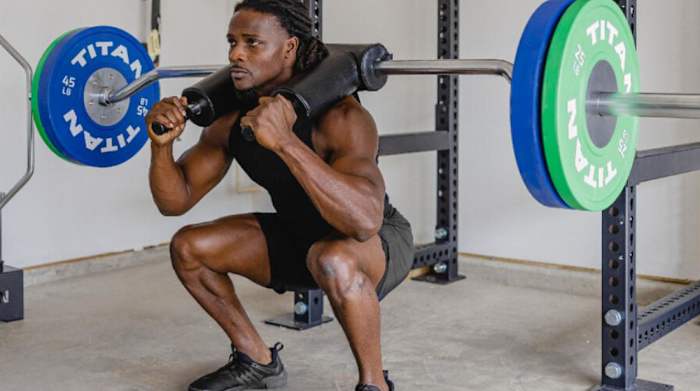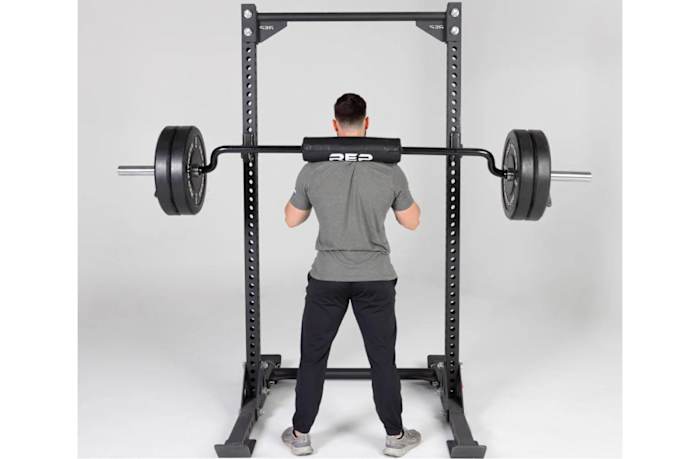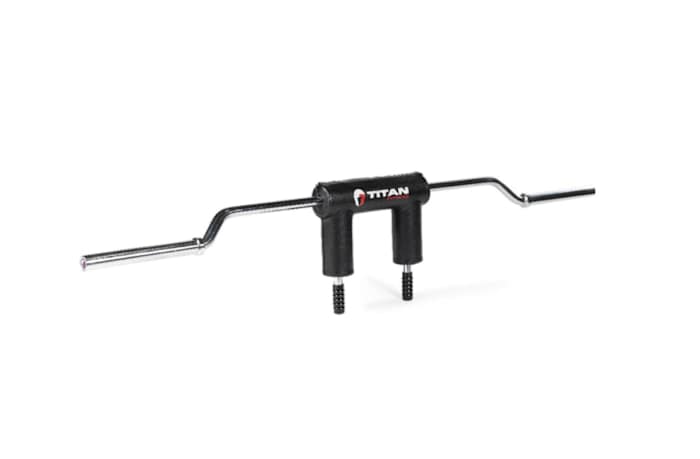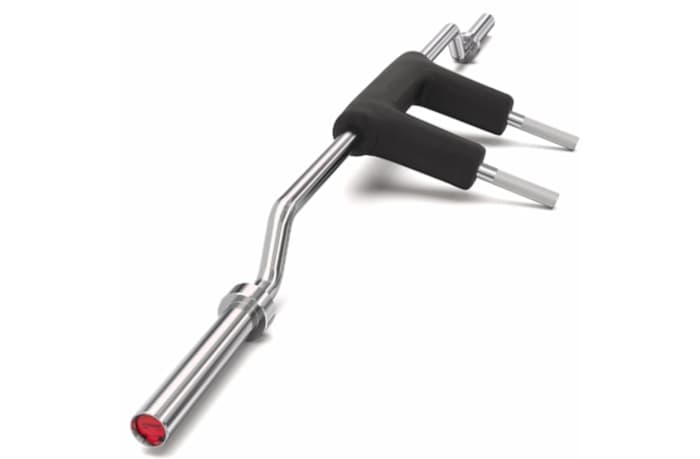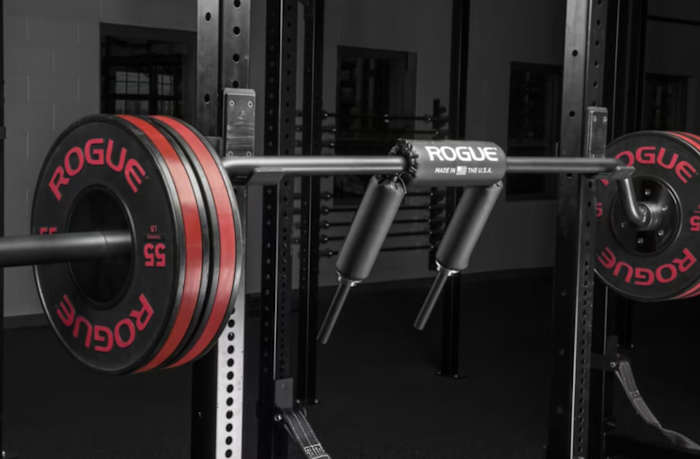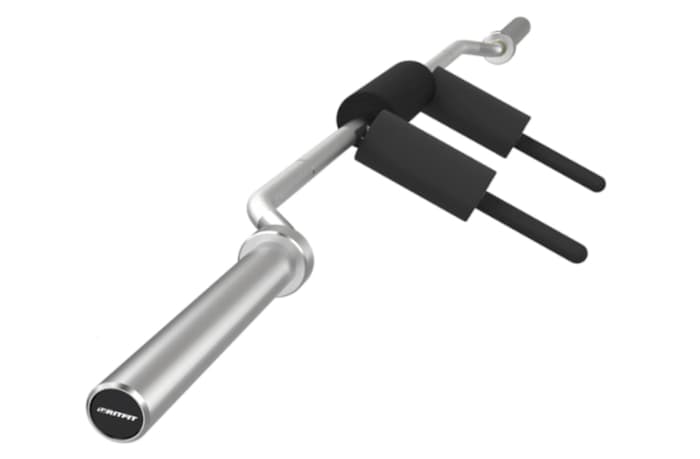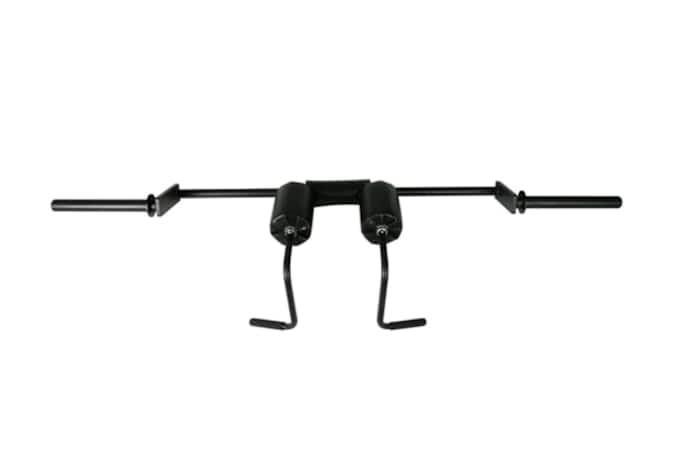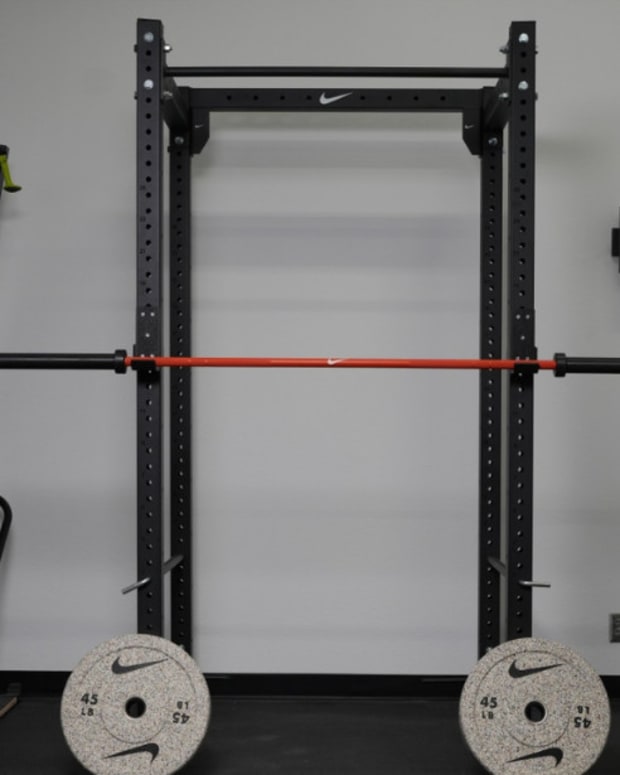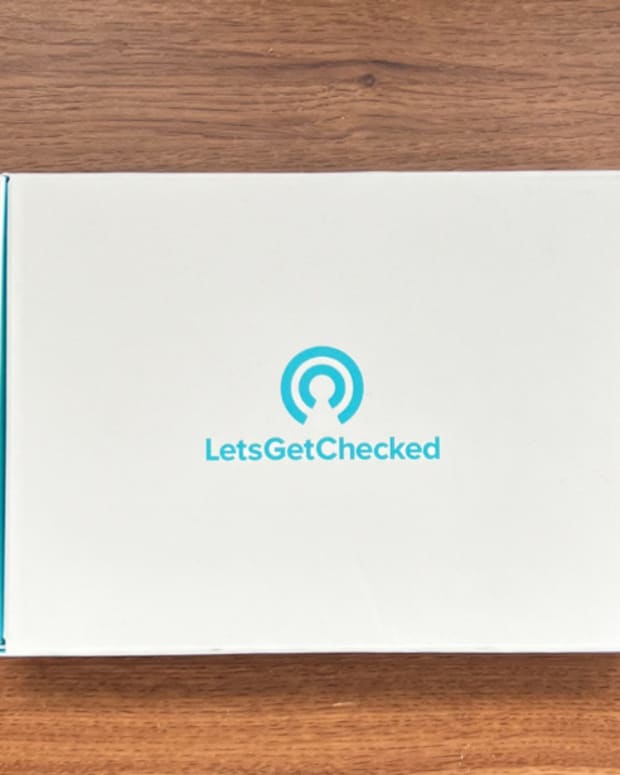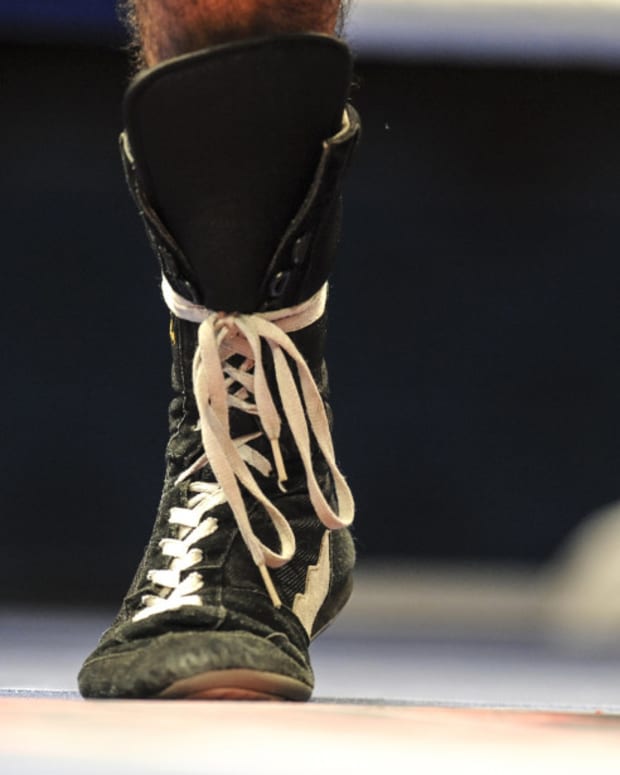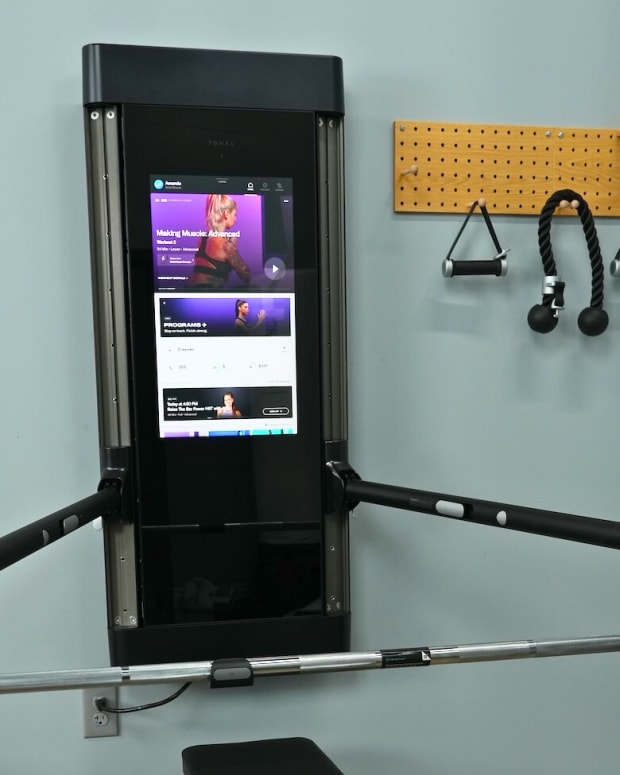The products featured in this article have been independently reviewed. When you buy something through the retail links on this page, we may earn commission at no cost to you, the reader. Sports Illustrated editorial staff are not involved in the creation of this content. Learn more here.
When you are working hard at the gym to make big strength gains, your safety should be your top priority. While having the right gear, like weightlifting straps and weightlifting shoes is important, much of your injury risk comes down to using proper technique. One of the weightlifting equipment swaps you can make to improve your form during your next strength training workout is to swap out a regular barbell on your power rack for a safety squat bar, also called an SSB.
The primary reason to use a safety squat bar rather than a traditional Olympic barbell is to minimize the stress and strain on your traps and upper back. A safety squat bar keeps your shoulders in their neutral position, and significantly reduces the load on your elbows. All of which can eliminate many of the common pain points with traditional barbell squatting.
In this in-depth guide, we will discuss the benefits of using a safety squat bar, important factors to consider when buying an SSB and our top picks for the best safety squat bars for your fitness goals.
Our Picks for the Best Safety Squat Bars of 2024:
- Best Safety Squat Bar for Comfort: Rep Fitness Safety Squat Bar
- Best Heavy Duty Safety Squat Bar: Titan Fitness Safety Squat Olympic Bar V2
- Best Safety Squat Bar for Smaller Necks: Synergee Safety Squat Bar
- Best Safety Squat Bar for the Home Gym: Rogue Fitness SB-1 Safety Squat Bar
- Best Budget Safety Squat Bar: RitFit Safety Squat Bar
- Best Lightweight Safety Squat Bar: American Barbell Safety Squat Bar
Best Safety Squat Bar for Comfort: Rep Fitness Safety Squat Bar
Key specs
- Product weight: 68 pounds
- Product weight capacity: 1,500 pounds
- Dimensions: 92.5 inches long, 15.6-inch sleeves
- Sleeve diameter: Two inches
- Material: Solid steel with a metallic black powder finish on the bar and a chrome finish on the handles and sleeves
The Rep Fitness Safety Squat Bar has thick, aggressively knurled handles that are removable, giving you maximum versatility and flexibility to change up how the bar feels in your hands.
The bar is designed to be easy to rack, even on wider racks, because the cambers are a little more than 49 inches apart.
This safety squat bar features a firm, high-density foam pad covered in durable vinyl which customer reviews on the Rep Fitness website said was very comfortable. The metallic black powder coat in a two-toned design gives it a polished look.
It’s a long and heavy bar, with an end-to-end measurement of 92.5 inches and an unloaded weight of 68 pounds. With that said, this hefty bar can support up to an impressive 1,500 pounds, making it more than strong enough for nearly all recreational and professional weightlifters.
The camber drop of 5.5 inches and camber angle of 22 degrees, helps you keep an upright posture while still feeling stable and balanced when loaded up.
With a sleeve diameter on the Rep Fitness Safety Squat Bar of two inches, you can use any Olympic weight plates and standard collars, which is convenient and can save money. The loadable sleeve length is 15.6 inches.
One final perk is that the Rep Fitness Safety Squat Bar is backed by a limited lifetime warranty and the shoulder pads are covered with a one-year warranty.
Related Post: Rep Open Trap Bar Review
Pros:
- Extremely high weight capacity
- Attractive
- Carbon neutral for improved sustainability
- Shaft diameter doesn’t require collars
- Very well balanced
- Fully knurled handles
- Comfortable yoke
Cons:
- Super long and heavy can be unwieldy for some
Best Heavy Duty Safety Squat Bar: Titan Fitness Safety Squat Olympic Bar V2
Key specs
- Product weight: 61 pounds
- Product weight capacity: 1,500 pounds
- Dimensions: 90.5 inches long, 16-inch sleeve length
- Sleeve diameter: 49 millimeters
- Material: Steel with chrome coating
The Titan Fitness Safety Squat Olympic Bar V2 is one of the most popular safety squat bars among commercial gyms, as well as serious powerlifters and bodybuilders looking to outfit their home gyms.
It has a well-padded harness, camber angle and weighted sleeves that lend stability to the bar. The five-inch drop keeps the weight lower to enhance your balance.
With a center of gravity that hovers lower, the bar is designed to feel easy to control. The camber angle is 22 degrees, which is on the lower end, but makes for a natural, stable feel.
This safety squat bar is 90.5 inches long and has a loadable sleeve length of 16 inches, giving you plenty of space to throw on quite a few plates. Plus, with a weight capacity of 1,500 pounds, this safety squat bar is more than sufficient for nearly all weightlifters.
The squat bar has an attractive chrome finish on the shaft and sleeves. It weighs 61 pounds total, and the sleeve diameter measures 49 millimeters. Reviewers said Titan’s safety squat bar is easy to rack and unload.
One of the nicer features is the thick, vinyl-coated pad that aims to not only reduce pressure on your neck and shoulders, but also prevent sliding due to the one-piece design.
The six inch handles are removable, increasing the versatility of the safety squat bar. At $300, it’s a great value for quite a professional-quality bar.
Pros:
- Loadable sleeve length
- High weight capacity
- Removable handles
- Reviewers found the padding comfortable
- Solid construction and chrome finish for durability and heavy-duty use
Cons:
- May be too long for some
Best Safety Squat Bar for Smaller Necks: Synergee Safety Squat Bar
Key specs
- Product weight: 55 pounds
- Product weight capacity: 1,000 pounds
- Dimensions: 86.5 inches long; 11.25-inch sleeves
- Sleeve dimensions: 50 millimeters
- Material: Steel with either a black phosphate or chrome finish
Our pick for the best safety squat bars for smaller necks is the Synergee Safety Squat Bar. The entire bar has an ergonomic design, but the yoke is especially well-suited for weightlifters with smaller necks because of the specific cambered geometry and padding on the bar. The one-piece pad is removable with a Velcro closure, and is designed to be easily cleaned.
The Synergee Safety Squat Bar has a sleek appearance, with the option of either a chrome or black phosphate finish.
The distance between the campers is 48 inches, so the bar is rackable on standard racks. One thing to note is that the loadable sleeve length is only 11.25 inches, so it’s a little bit shorter than some other premium safety squat bars. With that said, there is still ample room for most weightlifters and powerlifters to load up the bar.
It’s a strong, sturdy, well-balanced, fully-welded safety squat bar with a weight capacity of 1,000 pounds, so whether you're knocking out back squats or front squats this SSB can provide a great workout.
The handles are nearly 15 inches long and are knurled along the final 4.75 inches to provide an anti-slip grip.
Note that this bar is quite thin—the diameter is 38 millimeters— but reviewers on the Synergee website said it still felt stable. The benefit of this design is that the bar is lightweight at only 55 pounds. Therefore, it’s a bit more manageable and maneuverable for beginners or smaller weightlifters than some of the larger safety squat bars. The bar measures 86.5 inches long, so it’s about the same size as a traditional Olympic barbell.
The diameter of the sleeves is 50 millimeters, so you can use standard Olympic weight plates and collars, rather than purchasing specialty collars.
Other benefits of the Synergee Safety Squat Bar that we appreciate include it’s a carbon neutral product for improved sustainability and Synergee offers free returns if you are unsatisfied with your purchase.
Pros:
- Camber angle and handle spacing designed to be more comfortable for smaller necks
- Handles have aggressive knurling to improve grip
- One-piece shoulder and neck pad is removable
- Available in two finishes
Cons:
- Expensive
Best Safety Squat Bar for the Home Gym: Rogue Fitness SB-1 Safety Squat Bar
Key specs
- Product weight: 70 pounds
- Product weight capacity: 1,000 pounds
- Dimensions: 93 inches long
- Sleeve diameter: 1.5 inches
- Material: Solid steel with a black cerakote finish
The Rogue Fitness SB-1 is our pick for the best safety squat bar for your home gym. The SB-1 is designed to be more ergogenic and balanced, featuring a weight distribution that specifically targets your anterior chain.
The geometry of the camber angle and depth is intended to mimic a weight distribution pattern that falls between that of a front squat and a high-bar back squat. This offers an effective way to vary your training and increase glute ad quad activation, while protecting your lower back as if wearing a weightlifting belt.
This safety squat bar weighs 70 pounds and is 93 inches long. With a solid steel construction and fully-welded design, the Rogue Fitness SB-1 Safety Squat Bar is a heavy-duty bar with a maximum weight capacity of 1,000 pounds.
It has an attractive black cerakote finish. While resistant to rusting, some customer reviews on the Rouge Fitness site said the finish chipped over time.
Because the handles have a diameter of only 1.5 inches, you need to use collars to keep the weight plates in place. The recommended collars are the Rogue Proloc™ 1 Magnet Collars.
The Rogue Safety Squat Bar has premium vinyl and closed cell foam pads to enhance comfort along your back and neck. Although customers commented on the comfortable padding, some reviews on Rouge’s website said stitching on the vinyl is prone to coming undone.
The SB-1 has a 5.5-inch camber depth. One of the best features of the design is the long handles. Due to the length, you can keep your hands in a comfortable, natural position with any of the common lifts, from squats to good mornings.
Although this is a fairly expensive safety squat bar, it has an effective design and solid construction.
Pros:
- Very high weight capacity
- Durable steel and corrosion-resistant black cerakote finish
- Fully welded construction makes it a very heavy-duty bar
Cons:
- Considerably longer may not be ideal for small spaces
- Quite heavy
- Reviewers said Cerakote sleeves get scuffed up with use
- Stitching on the vinyl can rip, according to some reviewer
Best Budget Safety Squat Bar: RitFit Safety Squat Bar
Key specs
- Product weight: 46 pounds
- Product weight capacity: 700 pounds
- Dimensions: 87 inches long; 13.5-inch sleeve length
- Sleeve diameter: 30 millimeters
- Material: Alloy steel with chrome finish
There are a couple of high-quality safety squat bars sold on Amazon, the best of which is the RitFit Safety Squat Bar. Not only is this an inexpensive safety squat bar for those on a budget, but it is also one of the best lightweight safety squat bars, weighing just 46 pounds.
Due to the lightweight design, the maximum weight capacity is 700 pounds, so it might not be the best safety squat bar for competitive weightlifters and powerlifters. However, for most average gym-goers, this weight capacity should be more than adequate.
Despite being a lightweight safety squat bar, it is made from highly durable alloy steel with a chrome finish, so it is still a high-quality product designed to last.
The RitFit Safety Squat Bar has an ergonomic design to feel super balanced and stable for users. It has a more dramatic camber angle than some popular safety squat bars, coming in around 41.4 degrees.
Another perk is that the sleeve diameter is two inches, so the bar accommodates all standard Olympic plates and collars, foregoing the need for expensive specialty collars. It also has removable handles, which is usually a feature on more expensive safety squat bars, and maximizes the versatility and adjustability of the bar for different users.
This safety squat bar is about a half inch longer than a traditional Olympic barbell, measuring 87 inches from end to end, and has a loadable sleeve length of 13.9 inches.
To prevent slipping when your hands get sweaty, the handles have a medium knurling. One thing to note is that the handles are spaced fairly wide, separated by about 15 inches, which some reviewers on Amazon said was too wide. Therefore, if you have a narrow build, this might be somewhat uncomfortable. Because of the padding, the actual “real feel“ distance between the handles is only 12.1 inches.
With that said, if you are looking for a budget-friendly safety squat bar that will still perform well and last a long time, this is a great bar to choose.
Pros:
- Alloy steel and chrome finish for durability
- Very lightweight
- Padded grips
- Affordable and available on Amazon
Cons:
- Slim sleeve diameter requires collars
- Lower weight capacity
- Reviewer said pads are too far apart for smaller users
Best Lightweight Safety Squat Bar: American Barbell Safety Squat Bar
Key specs
- Product weight: 53 pounds
- Product weight capacity: 700 pounds
- Dimensions: 85.25 inches long, 15.5-inch sleeve length
- Sleeve diameter: 1.90 inches
- Finish: Powder coat
Some safety squat bars weigh upwards of 70 pounds or more, which can be unwieldy to move around and too heavy for beginners. The American Barbell Safety Squat Bar weighs only 53 pounds, so it is one of the best lightweight safety squat bars and is designed to be easy to handle and rack.
The overall length of the bar is 85.25 inches and the loadable sleeve length is 15.5 inches per side, giving you plenty of room to load up your plates. With a sleeve diameter of 1.90 inches, you can use standard Olympic plates, though it is recommended that you use the ProLoc Strongman collar for safety.
Although this is a great lightweight safety bar for advanced athletes, it’s not necessarily ideal for beginners. According to one customer reviewer on the American Barbell website, the angle of the camber has the tendency to pull your body too far forward, and that it was hard to maintain good posture without constantly pushing on the handles.
With that said, one of the primary benefits of this safety squat bar is that the hand position is not only in front of your body, but also positioned in such a way that your palms are facing down as if riding a bike. This further reduces the stress on your shoulders, making this a great safety squat bar for people with shoulder injuries or poor shoulder mobility issues.
There is a powder coat finish on the sleeves and shaft of the bar.
Pros:
- Oversized rollers for comfort
- Cambered bar geometry is ideal for shoulder mobility issues
- Multi-directional handle system
Cons:
- Requires the use of collars because of the sleeve diameter
What does a safety squat bar do?
A safety squat bar, or SSB, is one of the most common types of specialty bars, along with trap bars. The SSB is a cambered bar rather than a straight bar. The camber angle allows you to place your hands anterior to your body (in front), which helps reduce the risk of injury by placing less stress on your shoulders, elbows and wrists.
The safety squat bar also has a yoke and padding, which moves the weight higher up on your back, rather than falling on your traps, allowing you to have a more vertical trunk. This, in turn, reduces strain on the lower back and better activates the glutes.
Benefits of Using a Safety Squat Bar
Many people experience back pain when squatting with a traditional Olympic barbell. A standard barbell requires you to externally rotate your shoulders fairly significantly in order to get your hands in the proper position under the bar. This can result in either pain or the inability to actually achieve the proper position if you have any mobility impairments in your shoulders.
A safety squat bar keeps your shoulders in their neutral position and places your hands in front of your body (in an anterior position) which is much more natural than trying to reach backwards and hold the barbell in place behind your shoulders.
Another benefit of using a safety squat bar rather than a traditional straight bar or Olympic barbell is that the safety squat bar places the load higher up on your body, which is more comfortable and enables better movement mechanics. When using a straight bar, the load is positioned directly on your traps and base of your cervical spine, whereas with a safety squat bar there is thick padding on the yoke that raises the weight higher up.
Not only is it physically more comfortable to raise the weight higher up, but it also helps keep your body in a more vertical position. By altering your body position, the entire mechanics of the squat change somewhat, shifting more of the workload onto your glutes and quads and enabling you to more easily activate your core muscles, together which reduce the strain and stress on your lower back, knees and hips.
Typically, when you try to squat with a traditional Olympic barbell, if you are unable to get enough external rotation out of your shoulders, you have to compensate by pushing your elbows further behind your body and collapsing your upper body forward. This can increase the stress and strain on the traps, cervical spine, rotator cuff muscles, elbows and pecs.
Finally, while squats and lunges are the most common exercises performed with a safety squat bar, it’s actually a fairly versatile piece of strength training gym equipment because you can also perform good mornings, JM presses, box squats, overhead presses, step-ups, triceps presses, calf raises and split squats, among other exercises.
How to Choose the Best Safety Squat Bar for You
The following are some of the most important factors to consider when buying the best safety squat bar for your needs:
Camber angle
The camber angle is one of the key features that differentiate different safety squat bars and affect how they feel and perform.
The camber angle refers to the geometry of the bar, or how the safety squat bar is bent. This angle affects where the load will be positioned on the bar and where it will be positioned relative to your body. If the safety squat bar has the proper camber angle for your body, it will be well balanced such that it not only feels comfortable, but that you could almost remove your hands from the handle and still balance the bar in place.
There isn’t necessarily a “right“ or “wrong“ camber angle, but rather different camber angles will accomplish different goals. Most of the top safety squat bars have a camber angle of at least 22 degrees.
Many lifters like a camber angle around 22-30 degrees, but some safety squat bars have a much higher camber angle. The typical camber depth is about five or six inches.
Sleeve diameter
Ideally, you want the sleeve diameter of the safety squat bar to be between 48 millimeters and 50 millimeters (approximately two inches) so that it fits standard Olympic weight plates without the need for collars.
Bars with a smaller diameter will be lighter, but they will necessitate the use of a weight collar in order to keep weight plates in place. Although there isn’t anything wrong with this, it can certainly be a hassle and reduces the efficiency of loading and unloading your weights.
Construction materials and coating
The materials a safety squat bar is made of may affect the durability and strength of the bar, as well as the weight and maximal weight capacity.
The bar should always be constructed from solid steel rather than hollow steel, and alloy steel tends to be the strongest material.
The finish on the bar will also affect its appearance as well as its resistance to corrosion over time. Some of the more common safety squat bar finishes include the following:
- Uncoated: Cheap safety squat bars may lack a finish altogether. Although bare bars without a coating tend to be easier to grip when your hands are sweaty, they are more prone to corrosion over time because there is nothing protecting the steel.
- Black oxide: Safety bars with a black oxide finish are attractive, but the finish tends to wear off over time, so there isn’t a lot of longevity with the corrosion protection. However, the grip is usually excellent.
- Hard chrome: An electroplating process be used to create a hard chrome finish on higher-end safety squat bars. This shiny chromium finish can be quite highly appealing and durable, although the bar can be slippery when your hands get sweaty. Therefore, if you’re going to buy a safety squat bar with a hard chrome finish, it could be a good idea to use weightlifting gloves.
- Black zinc: A black zinc finish is more durable than a black oxide finish, although the color tends to fade to a green tint over time. The slickness of the finish also makes the grip challenging.
- Stainless steel: Safety squat bars that are made from stainless steel may not have an eternal coating on them because the stainless steel itself is extremely corrosion resistant. Although the material may develop a patina over time, the bar should not rust. With that said, stainless steel safety squat bars tend to be the most expensive.
Handles
Ultimately, one of the primary benefits of using a safety squat bar is that the positioning of the handles reduces the stress and strain on your upper body and back. However, in order to reap these benefits, the handles have to be positioned properly and of the right diameter.
If you have small hands, you will want to buy a safety squat bar with handles that have a smaller diameter to ensure that you can get the best grip.
Another factor to consider with the handles is the type of grip they have (foam hand grips, hard rubber hand grips or knurling). The best grip is really a matter of personal preference, although it’s important to note that knurling will be the most durable and foam will be the least durable. If you are going with a naked bar, make sure there is aggressive knurling to provide an anti-slip grip.
The spacing between the handles also will affect how the bar will feel on your body. Someone with a narrower frame will probably feel more comfortable with handles that are positioned closer together, while someone with broad shoulders will be better served with a greater distance between the two handles.
Finally, most safety squat bars have straight handles, but there are also spider handles and handles that extend further backward. Additionally, some bars have interchangeable handles or removable handles so that you can have greater versatility with your lifts and/or accommodate different users more easily. For example, if the handles can be removed, you can bench press with a safety squat bar.
Padding
The best safety squat bars have high-quality padding to enhance your comfort. Essentially, because the safety squat bar places the load higher up on your neck, the quality of the padding is especially important to reduce discomfort on your cervical spine.
Although you want the padding to be thick enough, if it is too thick, the bar will push your neck too far forward, which will alter the optimal geometry for squatting. Typically, padding that is 1.5 to 1.75 inches thick is ideal for most people.
Maximum Weight Capacity
Most safety squat bars have a maximum weight capacity that exceeds what the average gym goer will probably ever need, but if you are a competitive bodybuilder or a powerlifter, it’s especially important to pay attention to the weight capacity on the bar.
Depending on your strength, you might need to buy a safety squat bar with a maximum load limit of at least 700 pounds.
Safety Squat Bar FAQs
Are safety bar squats easier to do?
Safety bar squats are not necessarily easier to do, but they alter your positioning and movement mechanics in ways that make it more comfortable and biomechanically sound to perform a squat. This can reduce the stress and strain on your upper body and low back, which are two high-risk areas for injuries when squatting with traditional straight barbells.
Do safety bar squats work your glutes?
The primary way in which safety bar squats alter the mechanics of the barbell squat movement is that by raising the weight higher up on your body, you are able to stay in a more vertical position when you squat. EMG studies have demonstrated that this centralizes the hip extension movement on your glutes, increasing the activation of your gluteal muscles. With a regular barbell, your trunk is pitched slightly further forward, towards the direction of a deadlift. This makes it so you have to use your back as a lever to raise back up to stand, in a movement pattern that mimics the good morning exercise.
With a safety bar squat, the yoke places the weight higher up towards your shoulders, optimizing the angle for your glutes and quads rather than your back extensor muscles.
As a result, compared to using a straight bar or Olympic barbell, using a safety squat bar for squats can result in greater gains in the strength and size of your glutes.
Is a safety bar squat better for your knees?
Using a safety squat bar for squat can also potentially alleviate stress on your knees compared to doing a regular barbell squat. Because your torso is positioned more upright, your knees and hips are more open, and you can sit back further with the squat without losing your balance. This helps keep your weight behind your knees and allows you to get deeper into the squat without your knees bending forward past your ankles.
Can you lift more with a safety squat bar?
Although safety squat bars can improve your form, comfort, and movement mechanics, you can’t necessarily lift more weight with a safety squat bar–even if you’ve taken your preworkout supplement and your favorite pump-up song is playing from your headphones. In fact, most studies suggest that using a safety squat bar reduces the weight of the maximum loads you can lift.
For example, one study that compared differences in squat mechanics and loads between safety squat bars and standard barbells for experienced powerlifters found that using a safety squat bar decreased 3RM (three repetition maximum) loads by 11.3 percent.
Another study also found that one-repetition maximum (1RM) loads for squats were significantly lower when using traditional safety squat bars compared to traditional barbells, though lifting velocities were similar.
Final Thoughts
Overall, using a safety squat bar is an effective way to perform squats in a safer, more biomechanically optimal way. Buying a safety squat bar can elevate your workouts and be a great investment for your home or garage gym because it’s a highly versatile piece of fitness equipment.
Prices are accurate and items in stock as of publish time.
